Winter has always been my favorite season. It is a time of rest and tranquility.
As the days grow shorter and the air becomes crisp, a sense of anticipation and merriment fills the atmosphere in various corners of the globe. Winter holidays, a cherished time of year, beckon people from diverse cultures and backgrounds to come together and revel in the magic of the season.
From the twinkling lights on city streets to the aromas of traditional feasts in the air, winter holidays offer a glimpse into the heart of different societies, showcasing their unique ways of commemorating the season and fostering connections with loved ones. Join us on a journey across continents as we explore 10 winter celebrations that unite us in a collective embrace of festivity and cultural richness.
1. Hanukkah
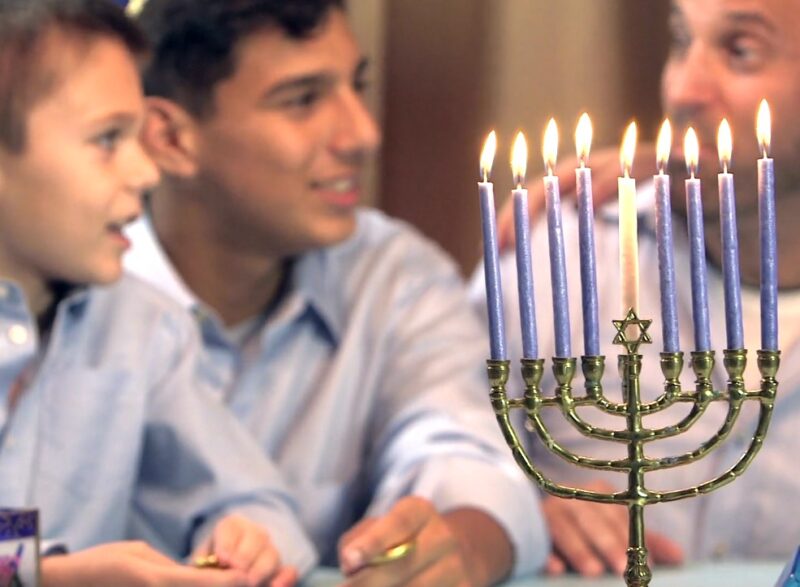
Hanukkah, also known as the Festival of Lights, is a Jewish holiday commemorating the rededication of the Second Temple in Jerusalem.
How is it celebrated?
For eight days each November or December, Jews light a special candle holder called a menorah. This ritual commemorates an ancient miracle where a day’s worth of oil burned for eight days in the temple.
During Hanukkah, many Jews indulge in special potato pancakes called latkes, sing traditional songs, and play with a spinning top known as a dreidel to win treats like chocolate coins or nuts.
Customs and Traditional Food
Hanukkah is celebrated with a nightly menorah lighting, special prayers, and fried foods. The significance of oil is central to this holiday, hence the tradition of eating fried foods.
Latkes (potato pancakes) and sufganiyot (jelly-filled doughnuts) are among the most popular dishes. People exchange gifts, and children might receive gelt, which are chocolate coins.
2. Three Kings Day
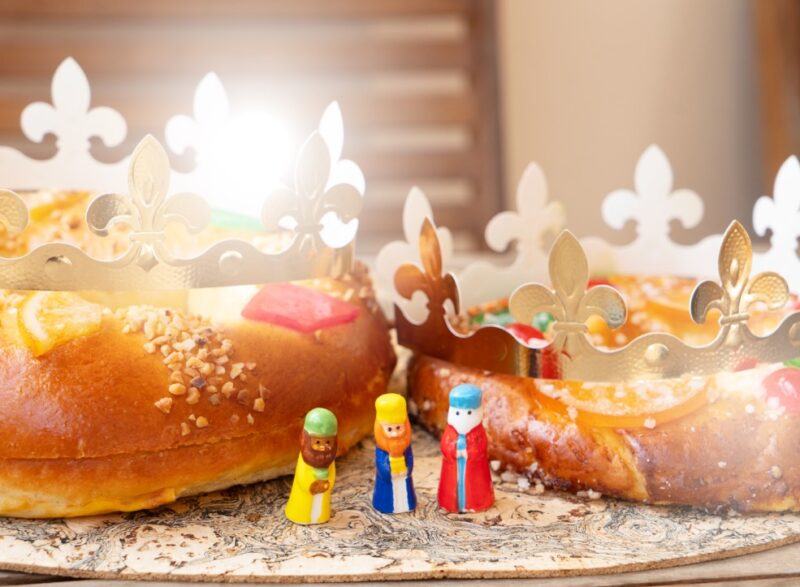
Concluding the Twelve Days of Christmas is the Epiphany, or Three Kings Day, which celebrates the biblical tale of the three wise men presenting gifts to the infant Jesus.
The Celebration
In Spain, many children eagerly await this day to receive their Christmas presents. Meanwhile, in Puerto Rico, children leave a box filled with hay under their beds on January 5, hoping the kings will bestow them with delightful gifts.
Over in France, the day is marked by baking a scrumptious King cake. Inside this cake, bakers conceal a coin, jewel, or tiny toy, bringing luck to the person who finds it.
Shoes by the door and a king’s crown
Three Kings Day is celebrated with various customs worldwide. In Mexico, children leave their shoes by the door for the kings to leave presents.
Many bakeries make “rosca de reyes,” a sweet bread representing a king’s crown. This bread often contains several baby figurines, and anyone finding a figurine is expected to host a party on February 2nd, known as Día de la Candelaria.
3. Winter Solstice
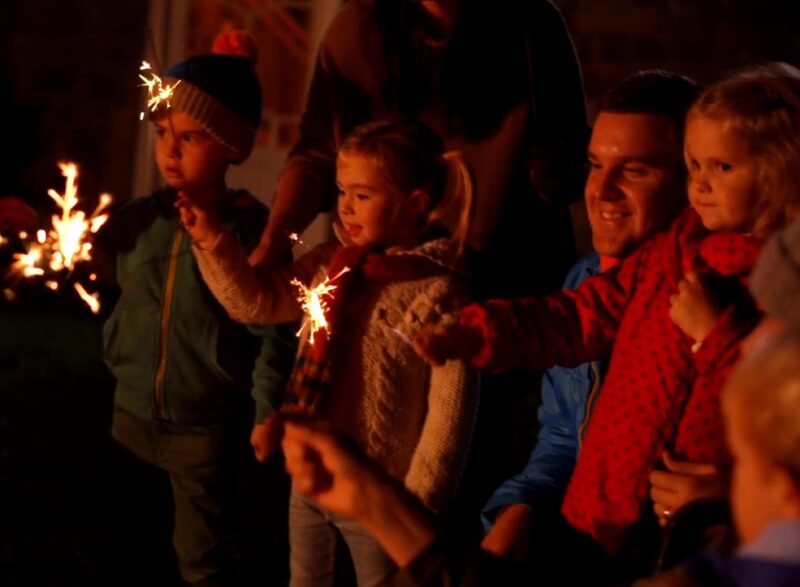
The Winter Solstice, occurring around December 21, marks the shortest day of the year. This astronomical phenomenon has been celebrated for millennia, symbolizing the rebirth of the sun.
Across the globe, people partake in various festivals and rituals during the Winter Solstice. In ancient times, communities would light bonfires and candles, hoping to lure back the sun and ward off the prolonged darkness.
These luminous celebrations served as a beacon of hope, promising longer days and the return of spring. This Holiday has played a significant role in cultures worldwide since ancient times.
The Pagan celebration of Winter Solstice (also known as Yule) is one of the oldest winter celebrations globally. Traditional winter solstice foods often emphasize the Earth itself, incorporating nuts, berries, spices, squash, potatoes, and hunted game like goose and venison.
The solstice is seen as a time of rebirth and is believed to hold a powerful energy for regeneration, renewal, and self-reflection.
4. Boxing Day
Boxing Day celebrated on December 26th, is a public holiday in many countries, particularly those with British colonial ties. It is a day to give back, and its origins are believed to be rooted in the tradition of giving boxes of gifts to the less fortunate.
Boxing Day is traditionally a day of relaxation and spending time with family, especially after the hustle and bustle of Christmas. In some cultures, it’s also a significant shopping day, similar to Black Friday in the United States.
Many stores offer Boxing Day sales, drawing large crowds.
The story behind its name
The name “Boxing Day” is believed to have originated from the tradition of giving “Christmas boxes,” gifts to those in need or to service workers as a token of appreciation. As for food, since it follows Christmas, leftovers from the Christmas feast, such as cold turkey or ham sandwiches, pies, and cheese boards, are commonly enjoyed.
5. Chinese New Year

This holiday, also known as Lunar New Year, is a 15-day festival celebrated in China and Chinese communities worldwide. It begins with the new moon that occurs between January 21 and February 20.
How do people celebrate it?
The holiday follows the lunar calendar, and its dates vary each year. The festivities last until the following full moon.
Celebrations include firecrackers, fireworks, wearing red clothes, and giving red envelopes (hongbao) filled with money for good luck.
Customs and Traditional Food
The origins of Chinese New Year are rooted in legend, with tales of a monster named Nian attacking villagers at the start of each year. To ward off this beast, loud noises, bright lights, and the color red were used.
Traditional foods enjoyed during this period include dumplings, fish (symbolizing abundance), and sticky rice cakes. The Lantern Festival, marked by glowing lanterns in temples and nighttime parades, concludes the celebrations.
Dragon dances, symbolizing good fortune, are also a highlight in many areas.
6. Christmas

And now, my favorite holiday – Christmas. Celebrated on December 25th, it commemorates the birth of Jesus Christ. It’s a global holiday, observed by millions, both as a religious and cultural celebration.
Good tidings we bring to you and your kin!
Christmas is marked by festive decorations, the singing of carols, attending church services, and the display of nativity scenes. The exchange of gifts, inspired by the Magi’s offerings to the infant Jesus, is a central tradition.
It is the perfect time to surprise people you love with little something they’ve always wanted!
Oh, bring us some figgy pudding!
Different cultures have their unique Christmas customs. In many Western cultures, Santa Claus or Father Christmas brings children presents. These presents can include delicious treats and toys like Etch-A-Sketch or blocks.
Decorated Christmas trees, wreaths, and stockings are common symbols. Traditional foods vary by region but may include roasted meats, mince pies, fruitcakes, and a variety of sweet treats like figgy pudding.
In many cultures, a special meal on Christmas Eve or Christmas Day is a highlight, bringing families together in celebration.
7. Kwanzaa
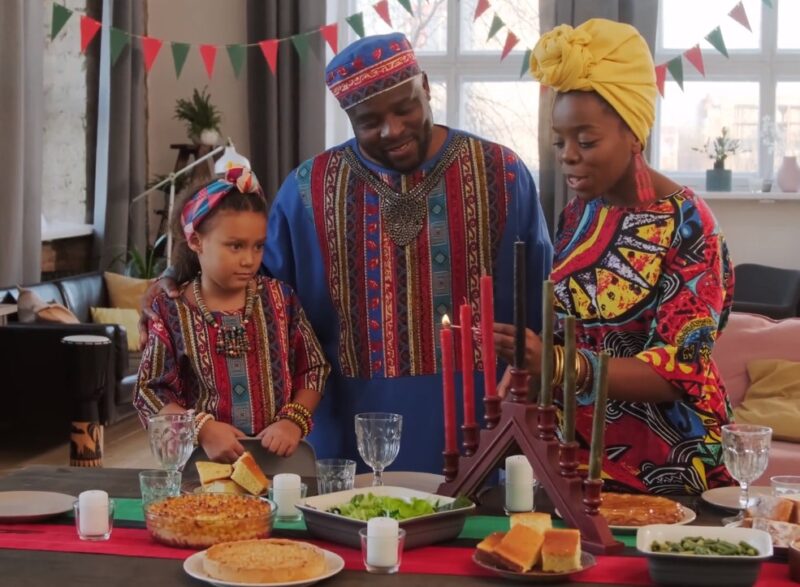
Kwanzaa is a seven-day African-American festival introduced by Dr. Maulana Karenga in 1966. It celebrates community, family, and culture from December 26th to January 1st.
What does it symbolize?
Kwanzaa emphasizes seven principles: Unity (Umoja), Self-determination (Kujichagulia), Collective work and responsibility (Ujima), Cooperative economics (Ujamaa), Purpose (Nia), Creativity (Kuumba), and Faith (Imani). Each day of Kwanzaa is dedicated to one of these principles.
Festive Customs
During Kwanzaa, families light a kinara, a special candle holder. The kinara holds seven candles: three red ones on the left, three green ones on the right, and a black one in the center.
Traditional foods enjoyed during Kwanzaa reflect African heritage and include dishes like jollof rice, okra soup, and fried plantains.
8. Las Posadas
Las Posadas is an important Christmas tradition in Mexico, celebrated from December 16th to December 24th. The term “posada” translates to “shelter,” reflecting Mary and Joseph’s search for lodging in Bethlehem.
The celebration reenacts Mary and Joseph’s journey and their search for a place to stay. Each night, a procession of people holding candles and singing carols goes from house to house, asking for shelter.
The hosts refuse them until they reach the designated house where they are finally offered shelter.
Festive Feast
After the reenactment, the celebration continues with a religious service, followed by a feast. Traditional foods include tamales and atole, a warm beverage.
The festivities often conclude with the breaking of piñatas.
9. St. Lucia Day
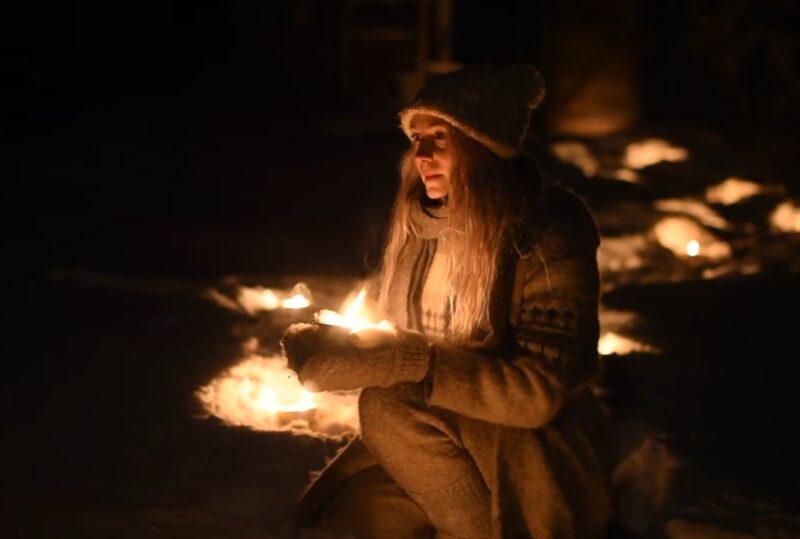
This Holiday, also known as St. Lucy Day, is a festival of lights celebrated mainly in Scandinavia and Italy. It commemorates Lucia of Syracuse, an early-4th-century virgin martyr.
Beginning of Happy times
On St. Lucia Day, the eldest daughter in the family dresses in a white gown with a red sash and wears a crown of candles. She serves coffee and St. Lucia buns to her family, symbolizing the bringing of light in the dark winter.
Customs and Traditional Food
The day is marked by processions of children dressed in white, carrying candles. The girls wear crowns of candles, while the boys carry star-topped sticks and pointed hats.
Traditional foods include lussekatter (saffron buns) and ginger biscuits. In many places, choirs sing carols and hymns dedicated to St. Lucia.
10. Diwali
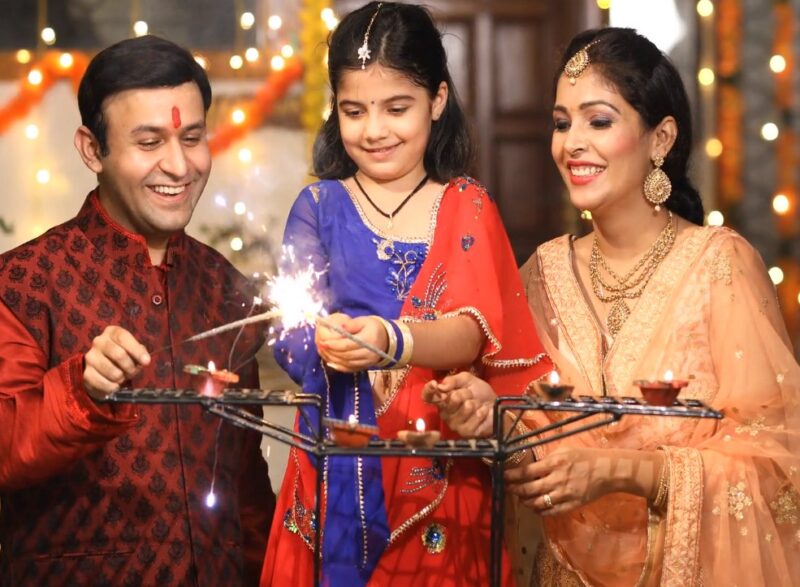
Diwali, also known as Deepawali, is a prominent Hindu festival with dates varying each year based on the Indian lunar calendar. While its roots are in Hinduism, other religions like Sikhs and Jains also observe similar festivals around the same time.
Diwali is recognized not only in India but also as an official holiday in countries like Fiji, Guyana, Malaysia, Singapore, and more.
Celebration of the victory of good over evil
Diwali is often referred to as the festival of lights. It signifies the victory of light over darkness, good over evil, and knowledge over ignorance.
Some historical narratives link it to the legend of Ram returning to Ayodhya after defeating Ravana, symbolizing the triumph of good over evil. Others associate it with the goddess Lakshmi’s birthday on the new moon.
The festivities typically span five days, with the third day aligning with the darkest day of the Hindu lunar calendar month “Kartika.”
Customs and Traditional Food
Preparations for Diwali often involve thorough cleaning or renovating homes and offices. Decorations include rangoli, intricate designs made from colored powder and sand, usually crafted on the floor.
Houses are adorned with candles and clay lamps both inside and out. Prayers, rituals, gift-giving, and fireworks are integral to the festival. Food plays a central role in Diwali celebrations.
The festival is renowned for its sweets, or ‘mithai’. Some popular sweets include Halwa (like gajar or carrot halwa), Laddu (sweet balls made with flour, ghee, sugar, and often nuts or fruits), Barfi (a fudge made with condensed milk), and Gulab jamun (donut-like sweets soaked in syrup).
Apart from sweets, savory snacks are also enjoyed, such as Bhaji or pakora (vegetable fritters), Samosas (pastry parcels filled with vegetables), and Puri (fried flatbread). Many families opt for vegetarian dishes during this period, with paneer-based dishes being a popular choice.
FAQs:
How is the winter season celebrated in Scandinavian countries?
Scandinavian countries celebrate the winter season with festivals like St. Lucia’s Day and Yule, featuring traditional foods, candlelight processions, and other customs.
What is Sankranti, and how is it celebrated in India?
Sankranti is a Hindu harvest festival celebrated in various Indian states. It’s marked by flying kites, making traditional foods, and offering prayers.
How is the Russian holiday of Maslenitsa celebrated?
Maslenitsa is a Russian holiday that marks the end of winter. It involves feasting on blini (pancakes), building snow statues, and participating in folk games.
How do people celebrate winter holidays in tropical regions where there’s no snow?
In tropical areas, winter holidays are celebrated differently, focusing on cultural and religious traditions rather than snowy activities. For instance, Christmas may be celebrated with beach parties in some places.
Are there any festivals that involve ice and snow sculptures?
Yes, many countries hold winter festivals featuring intricate ice and snow sculptures. The Harbin International Ice and Snow Sculpture Festival in China is one of the most famous.
Final Thoughts
The beauty of winter holidays lies in their diversity. Each celebration, with its unique customs, foods, and stories, offers a glimpse into the rich tapestry of human culture.
It’s evident that the essence of these celebrations lies not just in the rituals, lights, or gifts, but in the universal human desire for connection, hope, and warmth in the heart of winter. Even as each culture imparts its own unique flavor to the season, a common thread binds them all: the spirit of togetherness, gratitude, and love.
These holidays, in all their diverse glory, remind us of the shared values and aspirations that unite us as inhabitants of this vast and varied planet. May we all find comfort in the glow of these global celebrations and the promise of renewed hope they bring.







